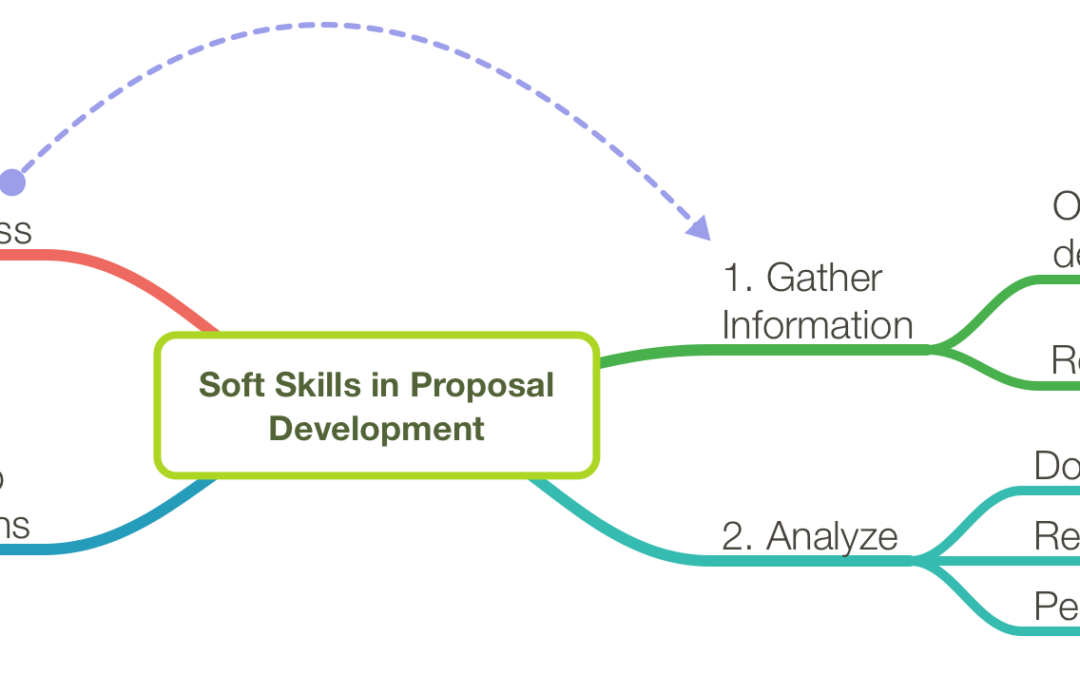
Customer Experience, Featured, Outsourced Engineering Team, Product Development, Project Management
Background
Before we discuss this subject – let’s reach a common understanding of what we mean by Soft Skills for Software Development Teams. Developing custom software requires a clear understanding of what the client needs to accomplish with the finished product. If you work in application development, you are aware that often this is a subject the client is not fully settled on when development begins, even if they have planned extensively. In fact, if the client believes they have all the bases covered in their application requirements, it is wise to be very careful and ensure they have the ability to be flexible at both a product and contract level. We all know that things will change as the product is realized and new opportunities present themselves. We also know that unexpected issues will come up during the project and the longer and more complex the project – the higher the risk will be. What we don’t know is how much change the project will need to be successful as envisioned and if that will be acceptable to the client. Realizing a product successfully requires that everyone on the development team is able to see more than the task that is in front of them and is enabled, personally and professionally, to help shape the outcomes. Without that, they are just following specifications in detail, not contributing their experience and insight fully and that can mean that things will go off the rails before anyone can pull them back. For developers to effectively provide the insight and experience they have to the project – they need to be able to use a range of soft skills.
On the other hand, no one can expect all or even some software developers to be business consultants, but in most cases, the same skills we expect our business consultants to have, can make all the difference when they are applied to the project from within the development team.
At a high level – what are these skills? Communication, negotiation, problem solving (creativity), and strategic thinking, but – within the context of the development team and its role in the project. There is a larger, more specific view of soft skills, but we will get to that later.

Scio Development Center, Morelia, Mexico
The team context is critical. If the development team cannot come together to support a concept or conclusion that could be advantageous to the project, it has a near zero chance of moving forward, no matter how valuable it may be. This doesn’t discount the visionary individual who sees the opportunity for change, it simply means that before the idea can move forward – the individual needs to exercise their soft skills to bring their team on board as a first step. And if the team does not feel enabled to exercise their creativity and insight, their soft skills for the concept, it will never happen.
Another common misconception is that roles like Project Manager and operations like communication are in themselves soft skills. Both areas benefit from soft skills greatly, but being a good project manager has more to do with how the role is defined than anything else. In larger teams, where the project manager is more of an administrator and deliverable coordinator, more of the work is defined by procedures, checklists, and project plan maintenance than soft skills, although certainly if the plans go wrong, negotiation becomes key. In these larger scenarios, communication also becomes bound up in processes and notification cycles that are often automated, if not run by assistants and procedures. In smaller agile teams, like we use at Scio for agile software development, soft skills are always important because there are fewer intermediaries and roles between the client and the development team. In general, while procedures certainly exist, they are more flexible and can be changed to fit the context of the project quickly. In these situations, there is little to no buffer between the development team and the key stakeholders on the client team. The better the members of the team are at leveraging soft skills, the better off the whole project will be. Smaller teams have to be creative, able to communicate their ideas and support them with analysis and strategy, and finally negotiate a path to a better outcome.
Is there a process under it all?
There is a process that ties together all soft skills that – when it is done right – makes all the difference. It is the process a team or individual uses to arrive at a conclusion for presentation, negotiation, and hopefully, acceptance. It is basically the same system a business analyst uses to present findings, but it needs to rely more on arriving at the conclusion as something everyone in the team can agree to and support. I bring this up because although all soft skills can be used by themselves, it is easier to see the value if you put them in the context of developing a proposal for a change in a project.

Considering the steps
- Gather Information
- Open, contextual questions delivered with empathy. As you gather information, conversations and the questions in them need to be developed within the context of the organization and with an understanding (empathy) for the people you are talking to. The communication soft skill of developing questions to gather information and delivering them with empathy has considerable value and too often ignored. Not using it properly results in few useful answers («yes» and «no» answers don’t give you any context) and little understanding of underlying drivers.
- Research – Of course, the skill of analyzing sources is critical, but so is using the team and peers as resources in research. They will bring different points of view and experience that can be expose additional lines of discussion.
- Analyze
- Document Scenario – Analysis must be based on the scenario under consideration and it must be documented clearly and agreed on by the team.
- Record Analysis – The analysis, under the scenario, needs to be referenced to the research and interviews
- Team Inclusion – Again, the team and any peers consulted need to be pulled into the analysis through review and discussion to ensure they understand what was considered before the conclusions were reached
- Develop Conclusions
- Attach to research and analysis – by the time you reach the conclusions, you should be able to draw clear lines between the research, the analysis and the proposed conclusion. Referencing back to those areas is key to achieving a collaborative conclusion.
- Team Inclusion – Of course, if the team is going to support the proposal, they have to understand the conclusions and how they were reached.
- Reassess
- Record Current Context – Document the current scenario and how it has changed.
- Cycle Back through the steps and document, changing as needed and adding new conclusions.
The process of developing proposals will use all the general skills above and if we get more granular, some more as well. Ultimately, they are the skills teams need to be successful and clients need to make decisions and gain confidence in their development team. But, the development team should not wait until the problem that needs to be solved is so big that it takes days and reams of paper to present. At that point, it is too late for the team to intervene because of project timelines and pressures. If problems are recognized early and conclusions are well-documented, they should be able to be presented in a short PowerPoint presentation. That is a much more realistic target for a development team if they can leverage their soft skills effectively.
A more comprehensive list of soft skills for Software Development Teams?
We’re not going to go into detail with the list we use of soft skills for our team training – but it is a good look at what we find useful to bring development team members to a level that improves their ability to add value to a project from their experience and insight:
–Thought Skills
- Associative Thinking (Connect the Dots)
- Analytical Participation
- Effective Questioning & Participation
–Team Skills
- Cultural Integration
- Collaboration & Coordination
- Key Stakeholder(s) Identification, expectations, Concerns
- Teamwork & Success (also a personal skill)
–Personal Skills
- Time Management (also a team skill)
- Always Learning, Improving
- Self-Confidence, Interpersonal Skills
These areas, laid against the normal team analysis, project management and delivery skills required for software development, bring a better experience for clients and higher job satisfaction for our team members. But with that understanding of the «why» behind a focus on soft skill development, the biggest barriers must also be understood:
- Soft skills do not come easily, especially in the areas of communication, collaboration and negotiation. Everyone must practice, fail, reassess, and continue the cycle to improve self-confidence and the interpersonal skills that are so important.
- Soft skills take time to develop and in the end, have to come from hands-on experience. One class, one try, does not suffice for training. The ball needs to be passed around so that everyone can get time to gain the confidence necessary. It is like driving a car – you cannot watch a series of videos on Youtube and expect to drive a car properly. You need to get into an actual car and feel what happens as you are moving along to learn and grow.
How can you get value out of soft skills?
As a software developer, can you remember situations where you saw a solution to a problem that you couldn’t properly communicate to your team or client? If you have any experience, you have. Taking some time to research, experiment, make mistakes, ask someone to mentor you in soft skills, can make all the difference. If you have mastered some soft skills, mentor others by doing – don’t wait for them to ask.
As a client, look for ways to support your team and enable them to leverage their soft skills. There is no question we are all made smarter by working together and it lowers the burden on you and your team. You can’t expect all ideas from y0ur development team to be acceptable – but the richness possible from an inclusive, collaborative environment can increase your chances of success and decrease your risk considerably.
As we move forward to achieve better outcomes and a more positive customer experience – custom software development must continue to look for opportunities to lower risk and achieve better outcomes. Development teams can act more as partners in product development and success and less as commodity labor. It is a vision we need to continue to work on – and realize – one person, one team, one project at a time.

Agile Methodology, Customer Experience, Nearshore, Project Management, Successful Outsourcing
First, let me say this is not an article for budding sociologists or business leaders who think that the last 20 years of increased person-to-person connectivity across the world, with the Internet, social media, entertainment and globalization, have broken down the differences in cultures across the world. The world has changed to be sure, but not on the scale you might imagine. People across the world still see things differently and interact based on their point of view, and that is as true in business as it is in international politics.
Culture actually takes a long time to change, whether we are considering an established business or even more so, a country or region. Studies have shown that the recent growth in communications across the world has only added to the social stereotypes we have to cut through to understand individuals from other cultures. And this is not to say that everyone within a culture will have the same values and drivers. While sociological texts provide many comparisons between cultures, they are at best, a general understanding of the expectations of people inside a society and how they interact with each other.
But at a business level, for a company wanting to outsource software development, what does this really mean? Why should you care? Software development is just a form of work and technology is pretty ubiquitous in the modern world. If people have the skills and experience to do the work wherever they are located, do their cultural values matter?
To investigate this question, let’s imagine a scenario that we (as an nearshore outsourcing vendor in Mexico, serving clients in North America) can relate to. You are starting a project with an agile software development team located in the central area of Mexico. Your team is located in the US Plains region. You might assume that because Mexico is just south of the border – they would know a lot about your culture – and you would be right. People in Mexico and the US consume a very similar range of entertainment and consumer goods and they cross borders in both directions for vacations and visiting their families. But does that fill in the gaps in understanding generated by sensational news reports and differing political agendas on each side?
Sadly, no. Although people in the US visit Mexico in increasing numbers every year, their destinations tend to be resort enclaves like Cancun. Unfortunately, those locations have more in common with the US than Mexico – with good reason. They are intended to make a US and international traveling public comfortable during their stay in another country, not confront them with challenges of language or culture.
On the other side of the coin, people in Mexico generally have relatives in the US and many have visited at different times, outside of the vacation areas like Disneyland. They have a good general understanding of US society, but in most cases, from an outsider’s point of view, even if they have been a resident of the US for an extended period of time. So, while people in Mexico have a fairly good understanding of US social interactions, it may not translate to an easy transition to a working team without some additional understanding and work on both sides.
 To understand the differences between the two cultures, take a look at a comparison between the US and Mexico as outlined by studies done by the Hofstede Center.
To understand the differences between the two cultures, take a look at a comparison between the US and Mexico as outlined by studies done by the Hofstede Center.
Hofstede measures cultures based on six areas (adapted from the descriptions provided by the center) :
- Power Distance – The degree to which the less powerful members of a society accept and expect that power is distributed unequally. The fundamental issue here is how society handles inequalities among people. People in societies exhibiting a large degree of Power Distance accept a hierarchical order in which everybody has a place and which needs no further justification. In societies with low Power Distance, people strive to equalize the distribution of power and demand justification for inequalities of power.
- Individualism – The high side can be defined as a preference for a loosely-knit social framework in which individuals are expected to take care of only themselves and their immediate families. Its opposite, collectivism, represents a preference for a tightly-knit framework in society in which individuals can expect their relatives or members of a particular in-group to look after them in exchange for unquestioning loyalty. A society’s position on this dimension is reflected in whether people’s self-image is defined in terms of “I” or “we.”
- Masculinity – The high side represents a preference in society for achievement, heroism, assertiveness and material rewards for success. Society at large is more competitive. Its opposite, femininity, stands for a preference for cooperation, modesty, caring for the weak and quality of life. Society at large is more consensus-oriented. In the business context, Masculinity versus Femininity is sometimes also related to as «tough versus tender» cultures.
- Uncertainty Avoidance – Expresses the degree to which the members of a society feel uncomfortable with uncertainty and ambiguity. The fundamental issue here is how a society deals with the fact that the future can never be known: should we try to control the future or just let it happen? Countries exhibiting strong UAI maintain rigid codes of belief and behaviour and are intolerant of unorthodox behaviour and ideas. Weak UAI societies maintain a more relaxed attitude in which practice counts more than principles.
- Long Term Orientation – Every society has to maintain some links with its own past while dealing with the challenges of the present and the future. Societies prioritize these two existential goals differently. Societies who score low on this dimension, for example, prefer to maintain time-honoured traditions and norms while viewing societal change with suspicion. Those with a culture which scores high, on the other hand, take a more pragmatic approach: they encourage thrift and efforts in modern education as a way to prepare for the future.
- Indulgence – On the high side, societies allow relatively free gratification of basic and natural human drives related to enjoying life and having fun. Restraint stands for a society that suppresses gratification of needs and regulates it by means of strict social norms.
From the comparisons generated by the surveys behind the studies, You can begin to see some basic differences between the expectations of people in the US versus Mexico:
- People in the US are generally less accepting of inequality in their interactions than people in Mexico. Business and organizations in Mexico tend to be more hierarchical and less accepting of «flat» organizational structures.
- In line with their lower acceptance of inequality, people in the US have a higher level of individuality. In Mexico, although this dimension is changing rapidly and different among segments of the population, individuality is less evident.
- In areas of masculinity versus femininity, the two countries are very similar, but Mexico is slightly higher. This shows in a what to outsiders may find to be a surprising amount of competitiveness between individuals and in business within Mexico.
- Mexicans have a high propensity for avoiding uncertainty in comparison to people in the US. This plays out in less propensity for risk and higher reliance on pragmatic solutions.
- People in the US and Mexico have very little difference in their orientation to long-term versus short-term goals. Both societies generally favor conservative goals.
- In contrast to the difference between the two societies’ individualism, Mexico is much higher on the scale of indulgence than the US.
Understanding these basic differences however, doesn’t tell you a lot about how a team of individuals might deal with a business situation. If you imagine a situation when the Mexican team is faced with working over the Christmas holidays to meet a deadline – you might expect some strong push-back because of long-term family traditions and expectations. But you could also expect that in the end, the team would go along with the need because of the value of having work and stability over the long term. But, if you didn’t understand underlying cultural expectations, could you also provide enough incentive to ensure production would not suffer during the period? You could generally expect that some special indulgences for the team would help, but what would really drive them?
Dealing with a specific problem requires more than a general understanding of a team’s cultural distance from your society. There are many layers of the cultural onion, including at a minimum societal, business, and individual levels, that impact the way a team interacts. Almost no one in business today has the time or resources to do the work required to really do a «deep dive» into comparative cultures to find a perfect match for their project. It is important to know we have cultural differences between us when we start a project, but from a pragmatic point of view, it is more important to know how to bridge them than to find «someone just right.»
Bridging the cultural divides goes back to best practices in starting all outsourced projects with remote teams – the initial period of team formation and alignment. Getting teams together, face-to-face, is critical to breaking down barriers and creating an atmosphere where cultural understanding can grow. You can’t expect either side of a team to change their own cultural profile, but you can put them in situations where their awareness of cultural norms within the team is improved and their ability to work together improves. Direct communication and interaction, in both work and casual situations, opens up opportunities to remove stereotypes and replace them with real, dimensional understandings of individuals.
In the end, the simple fact is that there are cultural differences between teams, even in the same company and in the same region. The cultural studies available should simply reinforce that understanding and the importance of dealing with them, not drive you away from using outside teams. You cannot use studies that give you only a general understanding of society to understand a specific team, although they may help you understand where to start.
From that point of view, if you are interested in finding an outsourced team, vendors that understand cultural dimensions and have ways to deal with them from the outset are going to be your best bet. Particularly in agile or DevOps implementations, trust and understanding are among the most important parts of team formation. Scio provides outsourced development teams to our nearshore clients in North America, with the elements necessary to ensure success, including team building approaches to fit your specific situation and assignment. Our teams have less geographical distance and more working-hour overlap than offshore providers which lowers the issues that new teams have to deal with at the outset. We would be glad to discuss your next project and how we can help.
Now we would be happy if you could help us share this page on your social networks so that we can reach more people who need help in these areas or are looking for a software development partner. All you need to do is click on one of the buttons below. Thank you very much!

Agile Methodology, Project Management
In recent years, the Agile project approach has been the choice of many for their software project management needs. It uses sprints, which in turn utilize short cycles that concentrate on the continuous development of a product through a constant feedback system in each cycle. As the Agile project management is a quickly moving approach, it permits those involved, such as the project managers and the software developers, to finish their tasks on time and hit their target turning points.
In addition, the Agile approach provides a wide range of advantages to project leaders, team members, and customers. The project development process becomes more flexible, and those involved in the process become more productive. Client needs are better catered to. Moreover, sponsors and investors benefit, too; as their overall interaction with the project or service increases, so does their satisfaction with the process.
When outsourcing the development of a software project that uses the agile method, it is important for the product owner and the development team to have an effective and efficient way of communicating with each other and tracking the project’s progress. In this regard, here are the Top 10 project management tools you can use to achieve this.
Top 10 Project Management Tools to Run Outsourced Software Projects
1. Atlassian Jira + Agile
With Atlassian Jira + Agile, users can create organized workflows that are suited to their needs, especially with its wide range of add-ons and its availability in both self-hosted and cloud-based formats. This software also supports Kanban and Scrum and can accommodate the functions of other tools such as JIRA and the other software tools that Atlassian offers. Furthermore, Atlassian Jira + Agile has several features like “HipChat,” which ensures that constant communication is maintained within the team. Another feature is “Release Hub,” which helps the user check whether the final product or service to be released is truly finished and no longer has an issue. Atlassian Jira + Agile also has a mobile app.
2. Active Collab
Active Collab has a user-friendly interface and is one of the more inexpensive project management tools available. As such, it is a perfect choice for startups and smaller organizations. Active Collab is also a good choice for users who are involved in many projects due to its effective management system for both documents and communication alike. In addition, Active Collab supports iOS applications and allows the client to be included in the process.
3. Agilean
Agilean has been created with the needs of small and medium-sized IT companies in mind. It allows project managers access to features such as release management, generated visual reports, and project planning. Users will also find that the interface of Agilean can be customized and that it even has 50 available built-in templates.
4. Wrike
Wrike’s capabilities ensure that project managers have access to features such as dashboards, charts, and task management tools, enabling them to deliver results faster. Wrike also allows its users to easily complete tasks such as managing the budget and tracking bugs. Moreover, it is available as a mobile app.
5. Trello
Trello is one of the most popular project management tools out there. It features drag-and-drop boards where users can leave messages, attach files, tag members in each board, assign deadlines and many more. Trello can be accessed both on Web and through its mobile app. Aside from these, Trello also has other features such as budgeting and tracking issues.
6. JIRA
JIRA specializes in both general project management and the tracking of bugs and issues in the project. It can be customized according to your project needs and includes many features, from workflows to issue management.
7. Pivotal Tracker
Pivotal Tracker is a tool specifically for those who work in web and app development. It is user-friendly and can integrate other software tools such as JIRA and Bugzilla. It has features such as user stories, burndown charts, and messaging.
8. SprintGround
SprintGround caters to the needs of software developers. It enables them to easily track their projects, as its features help them conveniently view through their projects until their releases. In addition, it enables the tracking of bugs.
9. VersionOne
VersionOne has an easy-to-use drag-and-drop interface and can accommodate the features of a Scaled Agile Framework across all its levels. Its users can conveniently monitor their team’s progress on its dashboard, and they can even leave messages and comments. As such, it is a good fit for team members who are far away from each other. In addition, VersionOne supports other project management tools, including JIRA and even Microsoft Visual Studio.
10. Asana
Asana has a simple and user-friendly interface and is available across platforms such as Windows, Android, and iOS. Its features include time tracking and budget management. It even provides a webinar on how to fully navigate through the app. Asana allows a project manager to share projects with team members, customers, and stakeholders. What’s more, it can be used even if you don’t have an email address!
Conclusion
Outsourcing a software development project is a cost-effective way of developing an app or another type of software program. However, regular communication and efficient coordination among the product owners and the software development team members are necessary to foster trust among the stakeholders and to ensure the project’s successful completion, especially when the agile approach is used. In this regard, it is essential to use a project management tool that not only enables the tracking of the project’s status but also facilitates communication and coordination among the various stakeholders involved.
Are you looking for a reliable software development company to develop your app? Contact us for more information. At Scio, you get the assurance that your software development project is in good hands.
Now we would be happy if you could help us share this page on your social networks so that we can reach more people who need help in these areas or are looking for a software development partner. All you need to do is click on one of the buttons below. Thank you very much!

Customer Experience, Nearshore, Outsourced Engineering Team, Product Development, Project Management, Technologies
Every business, big or small, has a great number of activity going on at all times and has a lot of things that they need to keep track of. This is why businesses ranging anywhere from a large chain to a singular freelancer can benefit greatly from a business management software. A business management software is a software or set of programs that has the ability to perform certain business operations as well as the ability to measure and increase productivity. When you are first starting out you may be trying to keep it all in a spreadsheet or, if you’re a freelancer, you may just try to keep it all in your head. As good an idea as this may sound at first, it will likely end up in chaos and your business will suffer for it.
Why Business Management Software is so important!
 One of the biggest reasons that you will need a business management software in place is the previously mentioned measurement of productivity. When you are beginning a new business endeavor it is crucial that every employee or component of the business be working at optimal productivity. If your employees or you yourself are taking the time to do the tedious tasks that the software can do, you will be wasting precious time that could be applied to more important tasks. By using the software in place of manual labor, you will free up a lot of time to spend on customers and building your business!
One of the biggest reasons that you will need a business management software in place is the previously mentioned measurement of productivity. When you are beginning a new business endeavor it is crucial that every employee or component of the business be working at optimal productivity. If your employees or you yourself are taking the time to do the tedious tasks that the software can do, you will be wasting precious time that could be applied to more important tasks. By using the software in place of manual labor, you will free up a lot of time to spend on customers and building your business!
This software will also help employers and business owners to see what their employees are doing with the ease of just a few clicks. This is through the calendar that makes it possible for employees to check in. You can also assign a project to any given employee and track it through this same software. This means that you won’t have to chase down the project leaders to find out the status of a project!
You can also save important documents through this software. Because it can bog up computers when you have all of the documents saved on your hard drive you have limited options. One option is to have external hard drives. However, it can take a while to go through multiple external hard drives when you are looking for a specific document. This is where a business management software comes in handy. Once documents are created they can be automatically saved into the software and they will be in arm’s reach whenever you need them!
How to choose a Software Solution?
 Overall, there are multiple ways that a business management software can help your business to grow and succeed. They can be a pricey software but they are definitely worth it if you find the right one. A good idea would be to choose one that has a free trial and allows you to take any data with you when you leave if you decide not to proceed with them. This will allow you to make an educated decision on what you want in your management software. Having this software in place is definitely something that you should do as early as possible to get optimal use out of it.
Overall, there are multiple ways that a business management software can help your business to grow and succeed. They can be a pricey software but they are definitely worth it if you find the right one. A good idea would be to choose one that has a free trial and allows you to take any data with you when you leave if you decide not to proceed with them. This will allow you to make an educated decision on what you want in your management software. Having this software in place is definitely something that you should do as early as possible to get optimal use out of it.
An even better choice is to invest in a custom business management software because that means that it will be tailor made for your specific needs and wants. This will make it even more helpful for you and your business. When you’re thinking about your business, you will want to get the best software possible and that is custom software in most cases!

Agile Methodology, Customer Experience, Nearshore, Product Development, Project Management, Successful Outsourcing
Outsourcing is a standard practice in the software development industry and it continues to experience steady growth, year after year. Among the common drivers cited are lowering costs of outsourcing, rapid acquisition of skilled resources, and avoiding staff overhead for one-time projects that would result in layoffs after completion.
In other words – it is all about costs in one way or another, whether they are real expenses or lost opportunities because you could not bring together a new team for a project in time to achieve your market. But, when you have paid the invoices and implemented your new application, what is on your balance sheet? Did you really save the money you thought you would? Are there hidden costs that have drained all the benefits out of the engagement?
10 hidden costs of outsourcing you may not be considering (in no particular order):
#1 – Deciding that driving cost to the lowest level possible is your primary goal
 Are you confused? If outsourcing is all about costs, how can it be that using lower costs as your primary reason for outsourcing would actually end up costing you more?
Are you confused? If outsourcing is all about costs, how can it be that using lower costs as your primary reason for outsourcing would actually end up costing you more?
- The lowest cost vendor cannot also be the best equipped with the best resources, deep expertise, strong cultural fit, high reliability and excellent real-time communications in your language. Solving each of the issues mentioned has a cost to the vendor, during the contract period or before to find, train, and maintain the necessary resources. Pushing to the lowest possible costs will require trade-offs that you and your team will bear. You may be able to anticipate the cost of working with less experienced and less independent resources at a production level, but can you also judge the costs that could come when unexpected issues arise? Have you ever experienced a project without unexpected issues? Really?
- Often, when price is the primary driver, the service buyer decides to manage costs by requiring a fixed-price bid. The upside is the risk is placed on the outsourcing vendor. To mitigate their risks, the vendor will then require extensive documentation, a detailed waterfall-type project plan that leaves acceptance testing to the end of the project, and penalties or prolonged negotiation if changes are needed. Plus, to pad for risk, the vendor will actually increase their bid because they know that fixed-price engagements rarely finish on time and within budget. In addition, they may decide to use less experienced resources (lower cost) overseen by senior resources (high cost, but with little time to look deeply into design and coding issues), So, in the end, instead of gaining assurance the project will end on time with an expected cost, the buyer has more cost for upfront specifications, more risk the final application will meet specifications as written but fail to achieve its goals, and much less oversight and flexibility once the project begins. The vendor will manage to the contract requirements and not the business goals their client decided were important internally. The vendor takes the entire responsibility for cost control, quality assurance, and management. In most cases, this means if their timeline or costs get out of line, quality control and communication between the development team and the client team will suffer.
- If your primary driver is cost, you will probably be pushed to offshore resources that are very low cost but have difficulty making their teams available in real time to collaborate with your team, lack good communication skills in your language and little in common with your culture. In these cases, you will have to do what you can to mitigate the fact that 28% of projects fail because of communication issues and 16% fail because of poor cultural matches.
#2 – The cost of selecting a vendor

Few buyers have a budget for selecting an outsourcing vendor and if they do, they rarely allow for the work that would really contribute to successful projects and relationships.
- Up-front requirements and bidding document preparation. In order to assure all vendors provide comparable bids, considerable time needs to be spent, by your in-house team specifying both the project and the vendor requirements. If a number of non-compliant or non-comparable bids are returned, what is the cost of going back to the vendor with more details and allowing other vendors to update their bids with what is perhaps new information or different assumptions for them? The hourly cost of internal staff, consultants or both add up but are often not counted in the final project analysis.
- Time and opportunity costs. Depending on the value of the project, the vendor selection process can take 4 months to a year. This includes selecting the vendor pool, preparing documents, sending, receiving and reviewing documents, negotiating and preparing contracts, demonstrations, travel to selected vendors, and more.
- Travel costs. To properly evaluate final round vendors for a strategic project, it is imperative that is spent at the data center or workplace of the vendor team to assure that practices and conditions match expectations. The greater the distance, the greater the actual costs and the time required for travel. Typical round-trip times to India and Asian locations are two to three weeks depending on the goals and number of vendors to be visited.
#3 Project initiation
The costs of project initiation have an inverse relationship with project risk. The less you spend on project initiation, bringing the teams together, assessing process and methodology, assuring communication, respect, and team collaboration is strong, and that there is a shared understanding of project goals, the greater the risk that the project will fail. But even knowing this simple fact, most vendors and buyers will decide to cut the project initiation phase in favor of «getting to productive coding» quickly. The downside of this choice is a longer time to reach full productivity, more risk of rework to meet expectations, and increased costs for project oversight and team management.
#4 Staff transition
When a new outsourcing team is started on a project, internal staff is often given new roles as part of the initiative. They could be tasked as product owners, to oversee user story development, to run internal quality and acceptance testing, or to assure that questions that cannot be handled directly by the internal product team are handled quickly by the right subject matter experts. If the outsourced team cannot work during the standard workday of the client team, the daily schedules of the internal team may have to be shifted drastically. Their existing roles and responsibilities will need to be handed off or reprioritized to allow them the time to handle their new work and the task switching that invariably occurs. The costs of transition (and retraining in the case of those that may be new to methodologies like agile) are rarely considered in project costs but in reality, if they are not allowed for, the resulting issues can be very costly.
#5 Infrastructure & operations realignment
Inevitably, a new outsourcing project will incur changes in local infrastructure and software development operations. The changes may include new virtual environments, changes to internal processes for continuous integration, automated testing, security and authentication, incremental releases to production or many other issues. Again, part of this falls to poorly planned project initiation, but even with upfront time focused on team cohesion and user stories, the requirements for infrastructure and operations are often overlooked. When they are, count on additional costs because of lowered productivity as issues are ironed out and everyone gets on the same page.
#6 Contract & relationship management
Throughout the project, the buyer/client-side project manager needs to assure that incremental payments match the effort spent and the deliverables received as well as the necessary progress toward completion. Not spending enough time on this aspect of the project can result in very tough negotiations if the project goes off track or unexpected issues arise. In addition, selecting the right project model, whether it is fixed price, time and materials, dedicated team or another variation, has a big impact on this area. A lack of trust and understanding or lack of partner-level communication during the project can make a project very hard to manage to a successful conclusion and very costly when issues must be resolved.
#7 Cultural & organizational alignment
It may seem like a «soft» issue, but if the outsourced team and vendor cannot navigate your cultural norms and organizational environment it is likely to make project management very difficult. Bringing a team from a hierarchical culture into an organization with a flat structure can be very disorienting to team members with different expectations for interaction and responsibility. Merging a small team into an enterprise system with many silos and layers of control can be very difficult. The new team in either case will require additional time to reach full productivity and oversight to ensure they can fully participate as expected – and has a real cost.
#8 Intermediaries
 To mitigate many of the issues in this list, outsourcing vendors and buyers often impose intermediaries on projects as an extra layer of «assurance.» This imposes two extra layers of cost on a project: The direct cost of the extra labor required and the indirect cost from the risk incurred when developers, product owners and subject matter experts do not regularly engage in project discussions directly. Every time an intermediary becomes involved, there is a loss of fidelity and clarity. In the end, instead of assuring better communication, the sides are pulled into a «blame-game» when issues are not fully explored or questions are «translated, collated and summarized.»
To mitigate many of the issues in this list, outsourcing vendors and buyers often impose intermediaries on projects as an extra layer of «assurance.» This imposes two extra layers of cost on a project: The direct cost of the extra labor required and the indirect cost from the risk incurred when developers, product owners and subject matter experts do not regularly engage in project discussions directly. Every time an intermediary becomes involved, there is a loss of fidelity and clarity. In the end, instead of assuring better communication, the sides are pulled into a «blame-game» when issues are not fully explored or questions are «translated, collated and summarized.»
#9 Technologies
The selection of technologies for a new project can have significant impact on project and application success. If the internal team restricts choices because of a lack of understanding and confidence in the options offered by the outsourcing team, if a lack of communication results in a poor understanding of risk and downsides of technologies selected, or if choices are avoided to keep from exposing a lack of awareness – the downsides can be very hard to overcome. They can raise «technical debt» to a degree that limits options «down the road» in the project or the application lifecycle and lower team cohesion to the point that trust and communication are lost completely.
#10 Location, location, location
To a degree, we’ve covered this already in the sense that work time overlaps, cultural fit, and communication issues can cause project costs to rise significantly. But on its own, the location of the outsourcing team in relation to the client team should be a part of vendor selection, a factor in project initiation, and a major concern from the beginning of any outsourcing relationship. The greater the geographic distance between the teams, the greater the issues will be. Mitigation costs, in general, will increase including travel, working hour adjustment, intermediaries, communication, contract management, etc. While considering nearshore vendors will not eliminate all outsourcing risks and issues, they can make other choices much easier to deal with and diminish risks significantly if they have the right resources and ability to work at a partner level with your team.
Outsourcing can save you time and money, but only if it’s done correctly. With so many factors to consider, it’s important that you do your research before making any decisions. The 10 points above are a great starting point – but there are still more software development costs to think about, such as marketing development costs and advertising expenses. By taking the time to understand all of the possible hidden costs associated with outsourcing, you can be sure that you’re not overspending on your project.
Scio is a nearshore vendor of software development services for our clients in North America. We tune our project model to the project at hand and operate with our clients at a partner level to lower risk on both sides. If you would like to discuss your next project and the options we can offer, please contact us. We would be happy to work with you.





 To understand the differences between the two cultures, take a look at a comparison between the US and Mexico as outlined by studies done by the
To understand the differences between the two cultures, take a look at a comparison between the US and Mexico as outlined by studies done by the 






